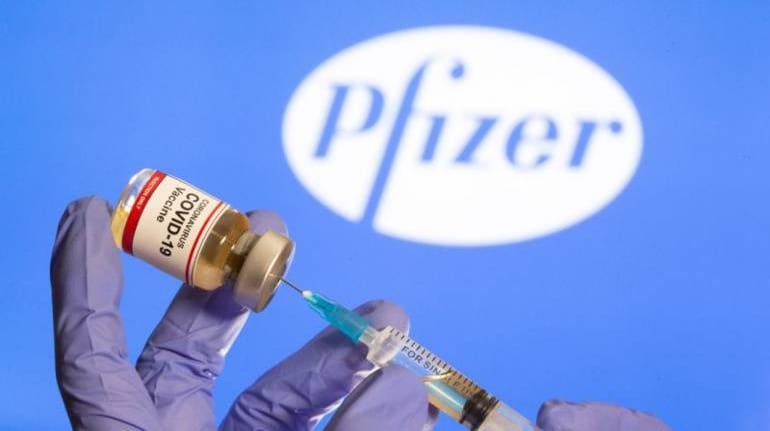File image: Pfizer's COVID-19 vaccine
As the Lopez family of Truckee, California, gathered to prepare dinner on a recent evening, one subject dominated the conversation: the coronavirus vaccine that will soon be shipped out across the country, giving Americans the first concrete hope that the pandemic will eventually end.
Enrique Lopez, 46, who runs a snow-removal business, explained how he was trying to persuade his skeptical employees that the vaccine is safe. His wife, Brienne, 41, a middle school teacher, said she was desperate for the vaccine after a September bout with COVID-19 sickened her for weeks. Their two daughters just wanted to know if the vaccine would enable them to return to their pre-pandemic lives.
Also read: US FDA approves emergency use of Pfizer-BioNTech COVID-19 vaccine, Trump says rollout in next 24 hours
“I know a lot of people are scared. They don’t know what the side effects are going to be,” said Enrique Lopez, who has seen half his workforce stricken with the virus. “It’s a risk we have to take. It’s going to make us safer and go back to normal.”
After months of anticipation, the arrival of the first vaccine is near. It lands in a country that is both devastated by the virus and deeply divided over almost everything concerning it.
The first Americans will most likely receive shots of the Pfizer-BioNTech vaccine in the coming days, and the government is expected to approve other vaccines as well. Health officials are working to ease public doubts about the safety of the injections, emphasizing that large numbers of Americans — perhaps between 60% and 70% — must get vaccinated to produce a decisively sharp decline in transmission rates. So far, there is work to be done.
Stephanie Bennett, a psychiatric nurse in Tulsa, Oklahoma, said she fully understood the importance of the vaccines and expected to be near the front of the line as they are made available. Still, she is torn.
“I do have risks in being a frontline health worker,” Bennett said. “But just being a mother, I do have this crushing guilt in getting a vaccine that my child would not have access to at the same time.”
Even so, Bennett said she felt doubly responsible as a nurse and a member of the Kiowa Tribe of Oklahoma to get vaccinated, in part to help ease skepticism among her neighbors.
“There’s a lot of distrust in our community,” Bennett said. “I want to show people, at least in my family and my community, that this is safe and we’ve got to do this.”
Still, wariness persists, even for some who know the toll the virus can take.
Maria Isabel Ventura, 59, who lives in Blythe, California, a rural area near the Arizona border, saw the dangers of the virus up close on Nov. 22. That was the day she rushed her husband, gasping for air, to the emergency room. Her husband, Alfonso Velazquez, a farmworker, spent two weeks being treated for a severe case of COVID-19.
“Why not start with vaccinating the president and the people who developed the vaccine?” asked Ventura, a Mexican immigrant who makes ends meet by cleaning, waiting tables and cooking. “I am afraid more than anything of this vaccine because we don’t know what reaction we will have to it. Maybe in a few months we’ll know more.”
An Associated Press poll, released this week, found half of all Americans ready to take a vaccine — with a considerable partisan divide. Six in 10 Democrats said they would get vaccinated compared with 4 in 10 Republicans. A recent Gallup survey showed more acceptance, with 63% of Americans now saying they would be willing to get a vaccine approved by the Food and Drug Administration, up from 58% in October and 50% in September.
Authorities are working to dispel doubt about the vaccines’ safety and enduring concerns over unethical examples of medical research in the United States, especially in African American, Latino and Native American communities that have been hit especially hard by the coronavirus but remain wary because of historical abuses by the medical system.
As virus deaths in the country climb toward 300,000, the toll is influencing how many view the vaccines. Adam Wyatt, the pastor at First Baptist Church in Leakesville, Mississippi, decided to enroll in Moderna’s vaccine trial after one of his congregants died of the virus in August.
Wyatt views hospital visits as one of his most important obligations as a pastor, and recalls feeling helpless as he gathered with the congregant’s family in a hospital parking lot, barred from entry by pandemic precautions.
But Wyatt, 38, didn’t tell many people about his decision afterward to enroll in the trial in Hattiesburg, about an hour’s drive west of his small town. “You hear, ‘This vaccine is the mark of the beast, don’t get this, it’s Bill Gates’ population control, you’ll get the microchips in you,’” he said. “A lot of my folks probably won’t get it.”
Now that the vaccine is on its way, Wyatt is preparing to speak publicly about his participation in the trial, hoping to ease his community’s concerns. “It’s something I can do,” he said.
Aesha Mahdi, 42, who lives in Gwinnett County, Georgia, also knows how the virus can upend lives. She got infected in April and identifies herself as a COVID “long-hauler,” still experiencing symptoms such as a racing heartbeat and shortness of breath going up stairs. Her rheumatoid arthritis has become worse, and sometimes she has trouble walking.
Mahdi, who is eager to be vaccinated, now works in contact tracing, helping to slow the virus’ spread. She said she was alarmed at how family members have fallen victim to misinformation campaigns that vaccinations are harmful, especially on Facebook and YouTube. “They’re kind of following a disinformation or misinformation train that is leading them down a whole conspiracy theory,” she said.
For others, the first vaccine’s arrival creates moral quandaries. Pat McKeage, 85, of Grand Rapids, Michigan, said she understood why older people are expected to get the vaccine before others, citing risk factors and how intensive care units around the country are near or above capacity. Still, McKeage, a published poet, said it struck her as “obscene” that she could get the vaccine before her long-term caregiver, who is 30.
“I told her, ‘I have lived my life. You have not,’” she said.
Others who are eager to get the vaccine fret about being low on the priority list. LaMont C. Brown II, a bus driver in Detroit, said the pandemic has exposed just how little his profession is appreciated. While police officers, firefighters and medical workers are treated as heroes, he hears little celebration of drivers, who interact with the public, potentially risking their health.
Now he worries that the same dynamic will play out with vaccines.
He has heard that medical workers and other emergency personnel will be first in line. But he’s heard nothing about making sure that drivers get vaccinated soon — not from his union, from the city’s Department of Transportation or from city leaders, he said.
“We’re basically second-class citizens,” said Brown, 55.
The arrival of a vaccine is also nurturing talk of a return to normalcy, or something resembling it. Tani G. Cantil-Sakauye, California’s chief justice, said she was imagining how the vaccine could change things for the nation’s largest court system, which is grappling with a huge backlog as many crucial proceedings are pushed online.
“If you envision the Supreme Court, every door is open, people are in the hall leaning against doorjambs, talking, chatting, laughing,” Cantil-Sakauye told reporters on a Zoom call this week. “That’s now completely absent, and the place is silent.”
She and her colleagues have debated whether judges and other court officers should be given priority for a vaccine. No one, after all, would deny that the courts are an essential function of society.
But Cantil-Sakauye said she ultimately came to believe that judges could not “stand on title” and be vaccinated before emergency workers and nursing home residents.
“We think that others need to go first,” she said.
Bryan Diaz, 15, of Nuevo, California, is also yearning for normalcy. Distance learning has been difficult with his 7-year-old brother, Kevin, vying for his attention, and he misses playing video games and kicking a soccer ball with a friend he hasn’t seen since early in the year.
“I feel excited that there’s a vaccine so we can go back to the school,” he said.
Bryan, whose father is a mechanic and mother is a homemaker, knows several people, including his godfather, who have contracted the virus. But his parents, Mexican immigrants, are suspicious of the vaccine.
“We talked about it, but my parents don’t want us to try it until it’s 100%,” he said. “They want to be sure it’s safe.”
c.2020 The New York Times Company












_2020091018165303jzv.jpg)

























